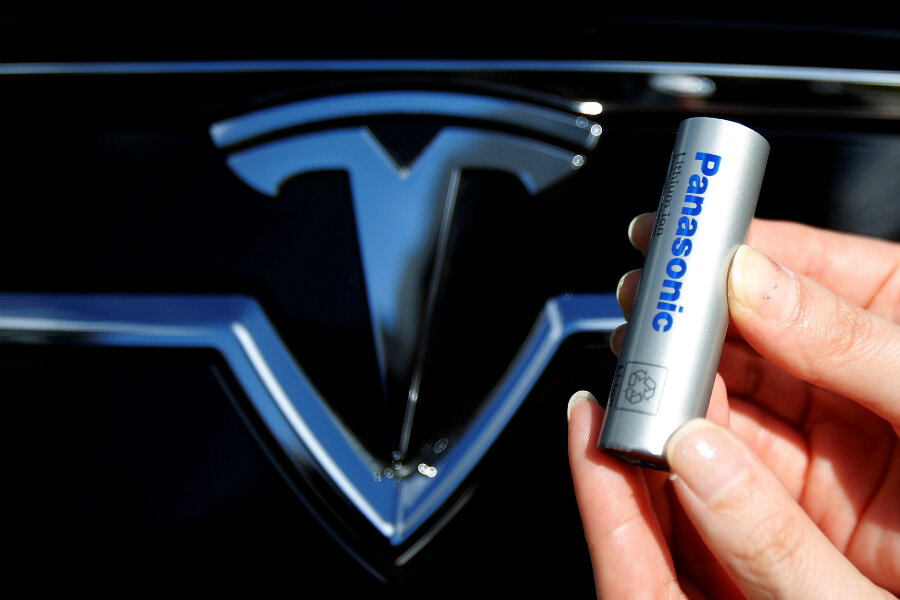Gigafactory begins battery production: Start of something big for Tesla?
Loading...
Tesla Motors has revved up production of its lithium-ion battery cells at its Gigafactory, the company announced Wednesday.
Tesla, in partnership with Japanese battery-maker Panasonic, began mass-production of the cells at the sprawling factory outside of Reno, Nev. The cylindrical cells – dubbed 2170 – will power Tesla’s Powerwall 2 and Powerpack 2 energy storage products, as well as its first mass-market car, the Model 3, when it is expected to hit the production line in the second quarter.
Tesla has said the Gigafactory, said to cost $5 billion and expected to be one of the largest buildings in the world once it is complete, will significantly lower the cost of its products. The start of production there, then, marks progress for the ambitious goals of the company and its chief executive, Elon Musk, to revolutionize energy use.
"By bringing down the cost of batteries, we can make our products available to more and more people, allowing us to make the biggest possible impact on transitioning the world to sustainable energy," the company said on its website.
The Model 3 car has a starting price tag of $35,000. Tesla's Model S and X both are priced at more than $100,000 when fully loaded.
The Gigafactory is currently operating at 30 percent, but is forecast to eventually transform battery production on a global scale. When it is expected to reach peak production capacity in 2018, the Gigifactory plans to produce 35 gigawatt hours per year of lithium-ion battery cells, nearly as much as the rest of the entire world’s battery production combined, the company notes. Put in other terms, this scale of production could power New York City for about three years, Tesla has previously said.
The company also expects this increased production to significantly decrease battery and product costs “due to increasing automation and process design to enhance yield, lowered capital investment per WH [watt-hours] of production, the simple optimization of locating most manufacturing process under one roof, and economies of scale.”
Tesla currently sources batteries for its luxury electric vehicles from Japan. For now, it will continue to do for the Model S and Model X. But the start of mass-production at the Gigafactory brings Mr. Musk that much closer to his vision for the future, writes USA Today’s Marco della Cava.
“Musk, who also runs rocket company SpaceX, has a broad vision for the Tesla brand, which now includes solar panel manufacturer SolarCity,” writes Mr. della Cava. “The idea is to have consumers drop into a Tesla showroom to purchase solar panels, a Powerwall unit to store the electricity, and a car.”
But Musk’s bold visions haven’t always been well received by analysts and investors. Tesla has been criticized for its failure to meet projected delivery goals, including its promises around the hyped Model 3.
This has led to the company recording consistent net losses in the last 12 quarters, as The Christian Science Monitor previously reported. But journalist Richard Read said, in many ways, it’s because of Tesla’s start-up mentality.
While Tesla's losses might sound alarming, they're probably to be expected for a company that is still, to many minds, a start-up. As the saying goes, you've got to spend money to make money, and Tesla is spending like crazy in the hope that its investments will pay off down the road. (Based on the very strong demand for the Model 3 sedan, that may be a safe bet.)
Translation: the numbers aren't so good now, but once Tesla has its facilities in order, the financials could level out.
Tesla also expects the Gigafactory, located near Reno, Nev., to be a boon for the region. Once the Gigafactory is fully operational, it will employ 6,500 people and lead to 20,000 to 30,000 additional jobs in the surrounding regions, the company said Wednesday.
This report contains material from Reuters.







